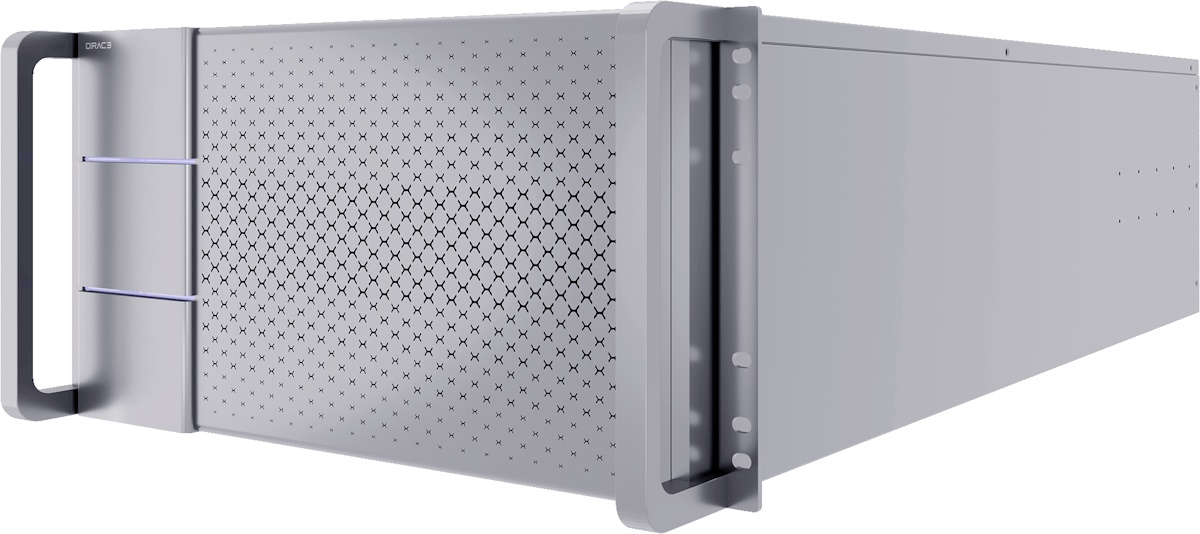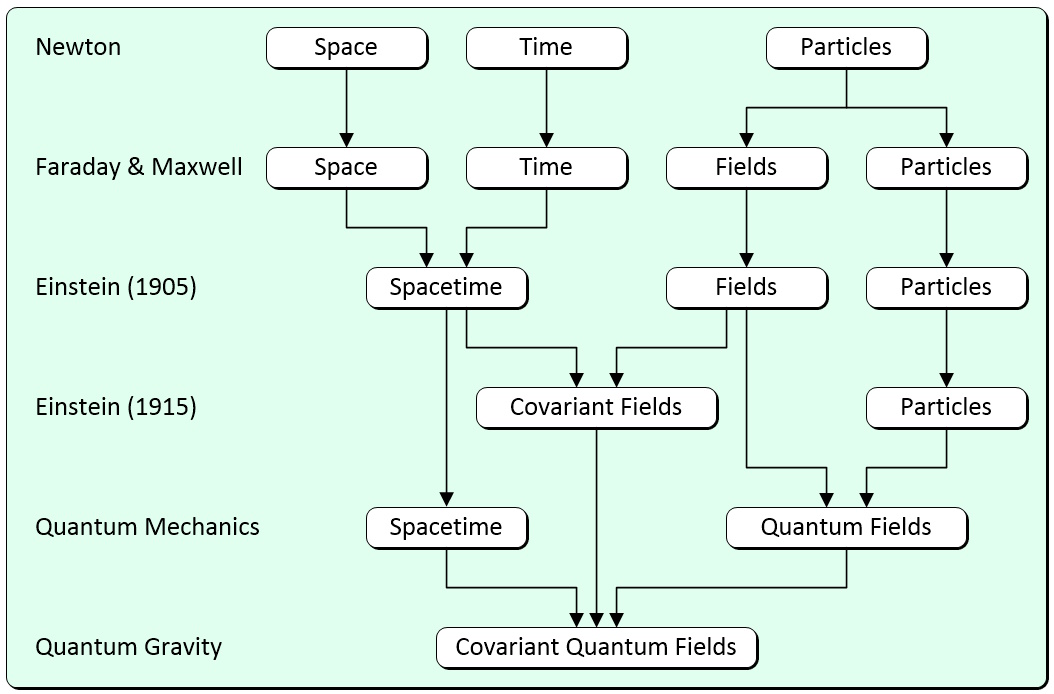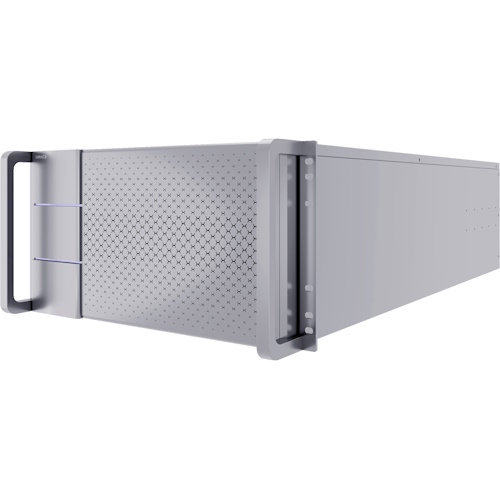As I may have mentioned on occasion, when it comes to quantum computing, one of my favorite quotes comes from the Night Watch tome of Terry Pratchett Discworld series. The quote in question reads as follows: “It’s very hard to talk quantum using a language originally designed to tell other monkeys where the ripe fruit is.” You can’t argue with logic like that.
Have you ever wondered what it would be like to have a conversation with a real-world incarnation of Dr. Sheldon Cooper from The Big Bang Theory? Well, I was just chatting with Dr. William “Bill” McGann, who could give Sheldon a run for his money. Now I have an idea of what I sound like when I’m talking to my non-engineer friends and family members.
Bill is the CEO of Quantum Computing Inc. (QCi), which recently announced the availability of its Dirac-3 Entropy Quantum Computer (EQC). This affordable 5U rack-mount quantum machine is purpose-built for solving complex optimization problems.

Meet the 5U rack-mount Dirac-3 Quantum Computer (Source: QCi)
Before we dive into the fray with gusto and abandon (and aplomb, of course—you should never forget to carry a plomb in case of an emergency), I’d just like to say that Bill did his best to explain everything without using terms like nanophotonic machine, vacuum fluctuation, Hilbert space, Hamiltonian encoding, Eigenstates, decoherence, and Poisson statistics. I’d like to say that, but I can’t because terms like these serve only to provide a starting point from whence Bill takes a deep breath before diving deep into the quantum foam, as it were.
As an aside, I have a blackbelt with respect to taming the wily binary digit (bit), which can be in one of two states: 0 or 1. Also, I can claim at least a passing familiarity with quantum bits (qubits). These little scamps exist in a coherent superposition of two states simultaneously, which basically means they represent all possible values at once (and then things start to get complicated). Following my chat with Bill, I’m now aware of the existence of quantum trits (qutrits), which are units of quantum information that exist as a superposition of three orthogonal quantum states, and quantum digits (qudits), which are like qubits on steroids. I think of qudits (almost certainly mistakenly) as “quantum integers,” but only because this allows me to sleep at night.
As another aside, if you find yourself confused by “quantum,” then reading Reality Is Not What It Seems by Carlo Rovelli probably won’t help at all. As I wrote in one of my Cool Beans Blogs: “Starting with the ancient Greek philosophers, Carlo works his way up through history, from Sir Isaac Newton with his space, time, and particles, to Faraday and Maxwell and their fields, to Einstein and his spacetime, ending up with the current theory of Covariant Quantum Fields.”

My interpretation of Figure 7.8 from Reality Is Not What It Seems (Source: Max Maxfield)
Waxing eloquent, I continued to pontificate as follows: “In a crunchy nutshell, it now appears that there really isn’t such a thing as space that ‘contains’ things, and there isn’t really such a thing as time during the course of which events occur.” Hmmm. That probably doesn’t make things any clearer. What may help is watching Quantum Fields: The Real Building Blocks of the Universe, with David Tong.
But we digress…
Let’s take a step back. Some problems are said to be NP Hard and NP Complete, where NP stands for “non-deterministic polynomial time.” In this case, “non-deterministic” refers to mathematically formalizing a brute-force search algorithm that will “take as long as it takes” (give or take). From a certain point of view, NP Hard and NP Complete problems are amongst the hardest problems to solve.
A classic example of an NP Hard problem in combinational optimization is the travelling salesperson problem (TSP). This can be summarized as follows: “Given a list of cities and the distances between each pair of cities, what is the shortest possible route that visits each city exactly once and returns to the original city?” The issue is that each new element results in factorial expansion of the complexity (factorials grow faster than regular exponential functions, but slower than double exponential functions, while tetration and the Ackermann function grow even faster). A good way to think about NP Hard and NP Complete problems is that a traditional computer may provide a solution one day, but we (possibly the entire human race) won’t be there to see it. By comparison, a quantum computer could solve the same problem before we’ve even started to stir the sugar in our morning mug of coffee.
In the same way that the idea of a zombie apocalypse may be thought of as a metaphor for a collapse in society as we know it, the travelling salesperson problem may be viewed as an allegory for a whole bunch of optimization problems, including transportation logistics, supply chain logistics, airline routing logistics, energy infrastructure optimization… the list goes on.
Basically, we are talking about any problem involving a lot of independent variables with a lot of dense interconnections and non-linear interactions between them. There are copious quantities of companies that would gain significant financial benefit from being able to solve this type of problem while our species still has a corporeal presence on this plane of existence.
The concept of quantum computers was first proposed in the 1980s by Richard Feynman and Yuri Manin. Since then, we regularly see announcements in the technical press pertaining to real-world quantum computers, but these are either alchemical machines or they are horrendously, eye-wateringly expensive.
How expensive? It’s hard to tie these things down, but according to a column from March 2024 on the Quantum Zeitgeist website, assuming the price per qubit to be $2,500 (which is low for most of the machines I’ve seen), a 1,000-qubit machine won’t leave you much change from $2,500,000.
All of which leads us back to QCi’s Dirac 3. This is named after English mathematical and theoretical physicist Paul Adrien Maurice Dirac, who was one of the founders of quantum mechanics and quantum electrodynamics. This bodacious beauty (the Dirac 3, not Paul Dirac) offers the equivalent capacity of a “traditional” 11,000-qubit machine (or a 200 qudit machine), all on a 5U rack-mount unit that runs at room temperature and costs “only” $300,000.
Let me take a stab at explaining how the Dirac 3 performs its magic. If there are any errors in my description, then I think it’s only fair to say they are all Bill’s fault for not making me clever-er-er.
Let’s start with the fact that QCi is an innovative, integrated photonics company on a mission to provide accessible and affordable quantum machines that operate at room temperature while consuming little power (the Dirac 3 consumes only 80W, which is less than a light bulb (well, it’s certainly less than a 100W incandescent light bulb).
The Dirac 3 may be thought of as a quantum optimization platform that works by manipulating photons, which aren’t very heavy* and don’t generate a lot of heat when you move them around (*I’m joking; the photon is a massless boson). Amongst other attributes, photons can be influenced in terms of phase and frequency, and you can use a superposition of photons in their Eigenstates to manipulate and modulate how they interact with each other.
Along with the Dirac 3, QCi also supplies an enterprise software package that helps us take a problem we wish to solve and express it in a meaningful way by translating it into a Hamiltonian formulation that the system can consume (the Hamiltonian is named after the Irish mathematician, astronomer, and physicist, William Rowan Hamilton, who developed a revolutionary reformulation of Newtonian mechanics, known as Hamiltonian mechanics, which was historically important to the development of quantum physics).
Now, take a deep breath, hold it, breathe out again, and try to relax. At the core of the Dirac 3 is an electro-optic modulator (EOM), in which a signal-controlled element exhibiting an electro-optic effect is used to modulate a beam of light. This modulation may be imposed on the phase, frequency, amplitude, or polarization of the beam. In the case of the Dirac 3, when we say “beam,” we are actually talking about a series of individual photons.
Remember that an interferometer works by merging sources of light to create interference patterns that can be measured and analyzed. In the case of the Dirac 3, a laser is used to fire a single photon through one arm of the EOM’s interferometer, where the entire Hamiltonian corresponding to the problem is encoded into the wave function of that photon.
Now, take another deep breath and hold it…
Basically, all the possible solutions to any problem are “out there” in some waveform expression. We can sample the vacuum fluctuation, which contains a Hilbert space number of virtual photons, and we can mix these virtual photons (that pop in and out of reality as we know it) by sampling them in the other arm of the interferometer.
After this, things start to get complicated, involving superposition, sending the photon down 10 kilometers of optical fiber (implemented as a coil in the Dirac 3), sampling a potential solution from Hilbert space against our encoded problem, adding some non-hermiticity to our quantum expression, and implementing a feedback loop to control the next photon.
Using the temporal modes of the photons in the fiber to determine where there’s a match between the energy-time position of the sampled photons versus the encoded problem, and by applying feedback, the system will naturally end up putting more photons in the temporal mode that returns the strongest signal or the least amount of loss, ultimately settling into a ground state or “optimal solution” that corresponds to the best-case solution to our problem. Now, all that remains is to translate this back into terms humans understand, like “The optimal solution to your travelling salesperson problem is…”
OK, you can breathe out again…
If you are interested in dipping your own toes into the quantum waters, you can request trial cloud access with enough time to test basic capabilities for free. Next up, you can pay for hourly cloud access or cloud + concierge access. For those who want more, you can go “on-prem,” which means having your very own Dirac 3 installed in your own server rack at your own facility. This latter option starts at $300,000.
Now, I know $300,000 isn’t chickenfeed (unless you happen to own a chicken farm), but it’s really not all that much if you are a large company with a lot of NP Hard and NP Complete problems you wish to solve.
Bill informs me that in the case of an on-prem solution, “We’ll come and install it. We’ll put it in your server room for you or wherever you want it mounted. And we’ll train your team how to put problems in. The Dirac 3 comes with an enterprise software package that will assist your team of domain experts with respect to formulating your problems and putting them in. And we offer additional support to give you training, get you going, and a host of services beyond that to make sure you’re happy with the result.”
I currently hang my hat in Huntsville, Alabama. Our city is growing at a tremendous rate (we recently became the largest city in Alabama). The traffic in the evenings has grown to be horrendous. I wonder if I could borrow a Dirac 3, use a live traffic feed from the internet to automatically encode my problem (“what’s the fastest route home?”) into a Hamiltonian formulation, and receive a printout on my way out of the office saying, “Turn right onto Madison Boulevard, then…”
What say you? Are you dressed appropriately for your own dip into the quantum foam? And, in the same way that artificial intelligence (AI) burst onto the scene circa 2010, and generative AI (GenAI) captured the collective consciousness circa 2022/2023, do you expect to see quantum computers making an appearance in our offices and homes in the near-term future?





